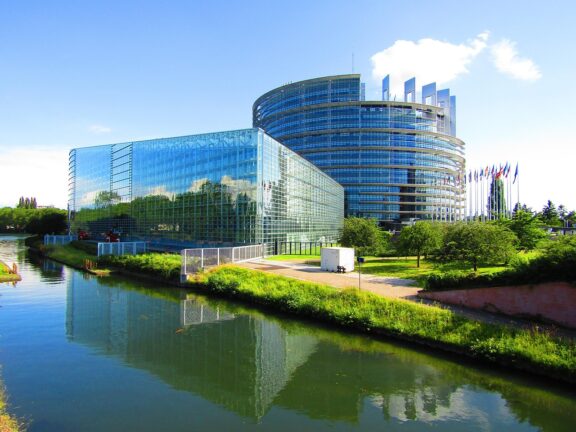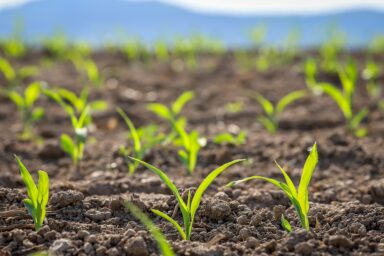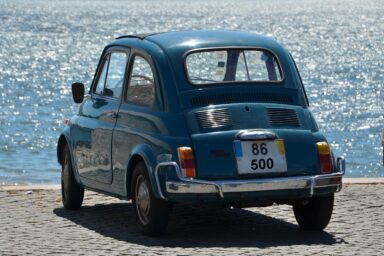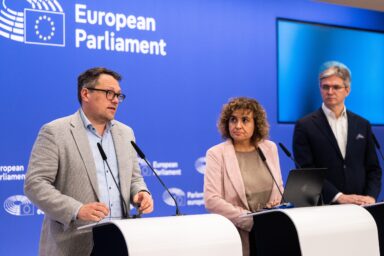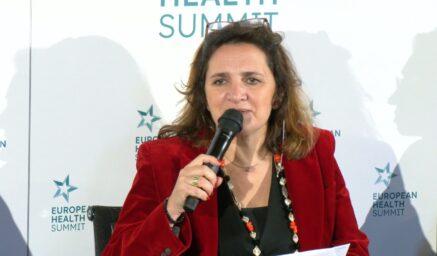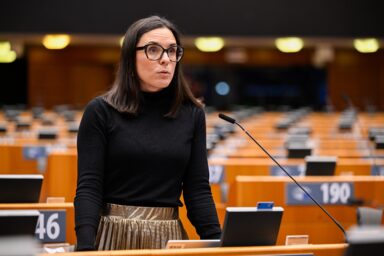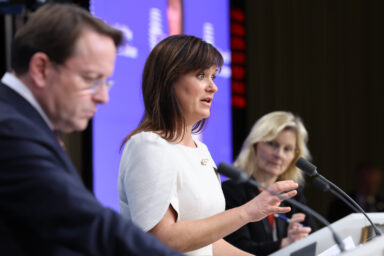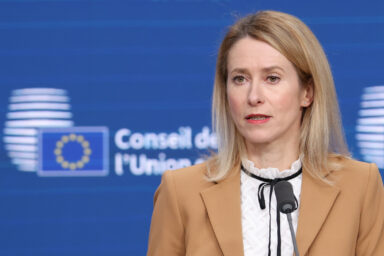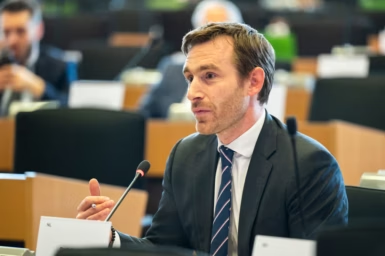The European Parliament’s May debate on water crackled with urgency and division, as lawmakers—awaiting the Commission’s European Water Resilience Strategy, to be unveiled in June—grappled with a crisis deepening by the season.
From drought-stricken Mediterranean farmlands to PFAS-contaminated tap water in Strasbourg, MEPs clashed over how to secure a resource once taken for granted during the latest plenary session.
The stakes were laid out by rapporteur Thomas Bajada (EPP/MT): “Water is life—for our people, our economy, our environment. But across Europe, this vital resource is under stress.” Groundwater depletion, erratic floods, and industrial pollution dominated discussions, exposing fault lines between north and south, urban and rural, and free-market pragmatists versus environmental purists. Yet beyond the rhetoric lies a sprawling, fragmented policy landscape—a mix of incremental progress and glaring gaps that mirrors the bloc’s struggle to harmonise 27 national priorities into a cohesive defence against drought, pollution, and waste.
Quixotic goals?
At the heart of this patchwork lies the Water Framework Directive, first adopted in 2000 to unify Europe’s fractured water governance. Its current goal—achieving “good ecological status” for all EU waters by 2027—now seems quixotic. By 2022, less than 40 per cent of surface waters met this standard, hobbled by agricultural runoff, industrial pollution, and over-abstraction.
Member states’ river-basin management plans, required under the WFD, have been inconsistently implemented. Portugal’s Algarve and Spain’s Guadalquivir basin remain chronically overexploited, while Germany’s chemical-laden Ruhr struggles with PFAS contamination.
You might be interested
Against this backdrop, Mr Bajada’s report on the upcoming European Water Resilience Strategy pitched radical efficiency targets, digital innovation, and a €13bn cohesion fund boost as lifelines. “We must be revolutionary in how we value water—it is not infinite,” he insisted, calling for “smart systems, real-time data, predictive modelling” to overhaul what he termed “scattered, sectoral” policies.
Palpable dissonance
The European Green Deal has layered newer ambitions onto this creaking foundation. The EU Climate Adaptation Strategy, unveiled in 2021, pushed water resilience into broader climate planning. It urged states to adopt nature-based solutions—restoring wetlands, reforesting catchments—to buffer against droughts and floods. Pilot projects, like Romania’s Lower Danube wetlands restoration, show promise: initial results suggest a 15 per cent boost in floodwater retention. But such initiatives remain fragmented, reliant on cohesion funds and political goodwill.

This dissonance was palpable in the Parliament debate. MEP Carmen Crespo Díaz (EPP/ES) framed water as an economic lever: “We can manufacture water through R&D—combining nature-based solutions with hydraulic infrastructure.” Lídia Pereira (EPP/PT) pointed to her country’s 30 per cent annual water losses, demanding “measurable results” from EU cohesion funds.
Yet dissent brewed on the right. Alexandr Vondra (ECR/CZE) warned against “over-regulating” and defended dams as non-negotiable: “Regardless of what some green friends claim.”
Perverse incentives
Agriculture, responsible for 60 per cent of EU water use, has been a contentious battleground. The Common Agricultural Policy, reformed in 2023, now ties 25 per cent of direct payments to environmental practices, including water efficiency. Spain has used its €2.3bn share of the Recovery and Resilience Facility (RRF) to modernise irrigation in Murcia, slashing water use by 30 per cent on pilot farms.
Perverse incentives linger, however. In France’s water-stressed Occitanie region, maize, a thirsty crop, still receives subsidies, while drip-irrigation adoption lags at 45 per cent. Esther Herranz García (EPP/ES) linked irrigation to food sovereignty: “Water for farming feeds all citizens.” Krzysztof Hetman (ECR/PL) urged incentives over penalties: “Farmers aren’t villains. Reward those saving water.” Jutta Paulus (Greens-EFA/GE) countered with stark climatology: “We’ve pumped so much groundwater, we shifted Earth’s axis. Nature-based solutions are cheaper than concrete.”
Three times Malta’s needs
Urban water systems face mounting scrutiny. The revised Urban Wastewater Treatment Directive (originally from 1991, last amended in 2024), aims to close loopholes that allowed 10 per cent of EU wastewater to flow untreated in 2021. Its headline goal—100 per cent collection and treatment by 2040—would require €90bn in upgrades. More innovatively, it mandates that treated wastewater be reused for irrigation and industry, a shift that could save 6.6bn cubic metres annually—equivalent to three times Malta’s total usage.
Skeptics note, however, that reuse rates in southern Europe remain below 5 per cent, held back by public distrust and patchy infrastructure. MEP Ana Vasconcelos (Renew/PT) blasted southern Europe’s leaky pipes: “Greece loses 80 per cent in some regions. Shared accountability needs EU coordination.”
Pollution has proven even thornier a challenge. The Zero Pollution Action Plan sets bold targets: halving nutrient losses by 2030, cutting microplastics by 30 per cent. But—guess what—enforcement is uneven. While the Netherlands has reduced nitrogen pollution by 12 per cent since 2020 through strict farm buyouts, Poland’s Vistula basin still sees fertiliser runoff spike by 8 per cent annually.
Thirsty data centres
“Forever chemicals”, or PFAS, meanwhile, have slipped through regulatory cracks. Despite a 2022 ban on PFOS and PFOA in firefighting foams, over 4,000 PFAS variants remain unregulated. Belgium’s Zwijndrecht, where PFAS contamination forced a 2021 evacuation, epitomises the cost of delay: cleanup estimates now top €1.2bn. In the Parliament debate, S&D’s Christophe Clergeau cited Alsatian villages where tap water was deemed unsafe: “How many towns will face this in three years?”
MEP Grégory Allione (Renew/FR) juxtaposed industrial ambitions with ecological limits: “Data centres consume 12,000 m³ daily—more than Strasbourg’s needs. Europe’s digital sovereignty shouldn’t parch our children.”
Funding the transformation has relied on a spaghetti bowl of instruments. The 2021–2027 Cohesion Policy earmarked €14.4bn for water projects, from Bulgarian flood defences to Cypriot desalination plants. Horizon Europe has channelled €1.8bn into R&D, including AI-driven leakage detection and solar-powered desalination. Yet disbursement bottlenecks persist. Italy, for instance, has accessed just 40 per cent of its allocated €4.1bn for water infrastructure, mired in bureaucratic delays.
Political headwinds
Commissioner Jessika Roswall, responding to Parliament’s demands, welcomed “ambition” but dodged funding commitments: “I cannot prejudge the next MFF.” Her appeal to reallocate cohesion funds—part of the Multiannual FInancial Framework mid-term review—drew scepticism. MEP Günther Sidl (S&D/AUT) pressed harder: “Where’s the cash for irrigation systems? Farmers can’t wait.”
Political headwinds further complicate matters. Hungary and Poland have resisted stricter pollution caps, citing farm-sector vulnerabilities. France, amid rolling farmer protests, lobbied to soften the Nature Restoration Law’s wetland targets. Even climate-ambitious states face trade-offs: Denmark’s plan to triple solar capacity by 2030 risks conflicting with groundwater protection in Jutland, where panel installations require land-use changes.
These tensions flared in the Parliament debate. MEP Mathilde Androuët (PfE/FR) dismissed “technocratic centralisation”, urging local management: “Brussels shouldn’t decide water use for Occitanie farmers.” András Kulja (EPP/HU) criticised “uniform rules” stifling Danube basin states, where “droughts kill harvests and breed inequality.”
Pockets of progress
Amid this fragmentation, calls for a standalone European Water Resilience Strategy have grown louder. The European Court of Auditors urged such a move in 2022, noting that 13 different directorates-general oversee water files. A 2023 draft blueprint, leaked to Politico, hinted at tighter efficiency standards, cross-border crisis protocols, and a “blue corridor” fund for Mediterranean states. But with elections looming in 2024, the von der Leyen Commission shelved formal proposals, opting instead to fold water into the next Multiannual Financial Framework debate.

For all its flaws, the EU’s patchwork has delivered pockets of progress. Portugal’s “Água que Une” initiative cut urban leakage rates by 22 per cent in 2022, while Lithuania’s nitrate-reduction schemes have restored 12 rivers to “good” status. Digital tools are bridging divides: the European Drought Observatory now provides real-time data to 18 states, up from six in 2020. And the mere fact that water resilience—once a niche concern—is debated in Strasbourg signals shifting priorities. Yet as the Rhône and Po basins hit record-low flows in 2023, and PFAS permeates 17,000 EU sites, the costs of half-measures mount.
Europe is dehydrating
The Parliament’s challenge is clear: to craft policies as fluid as the resource they aim to protect. Between PFAS bans and farmer subsidies, data centres and droughts, the bloc’s next move—whether a bold strategy or more cautious tinkering—will ripple far beyond its borders. For in the age of climate breakdown, water resilience is not merely a policy choice. It is the price of survival. As Renew’s Mr Allione starkly concluded: “Europe is dehydrating. This isn’t a metaphor—it’s hydrological, social, and economic reality.”
With 20 per cent of EU land and 30 per cent of citizens already water-stressed, the real test lies beyond Strasbourg’s chambers—in arid fields, polluted rivers, and the fragile aquifers beneath Europe’s feet. The time to act, as Mr Bajada, the rapporteur, warned, is not tomorrow; it is now. However, what with the Union’s urgent priorities department fairly crowded, the future of its water strategy remains a bit of an enigma.
